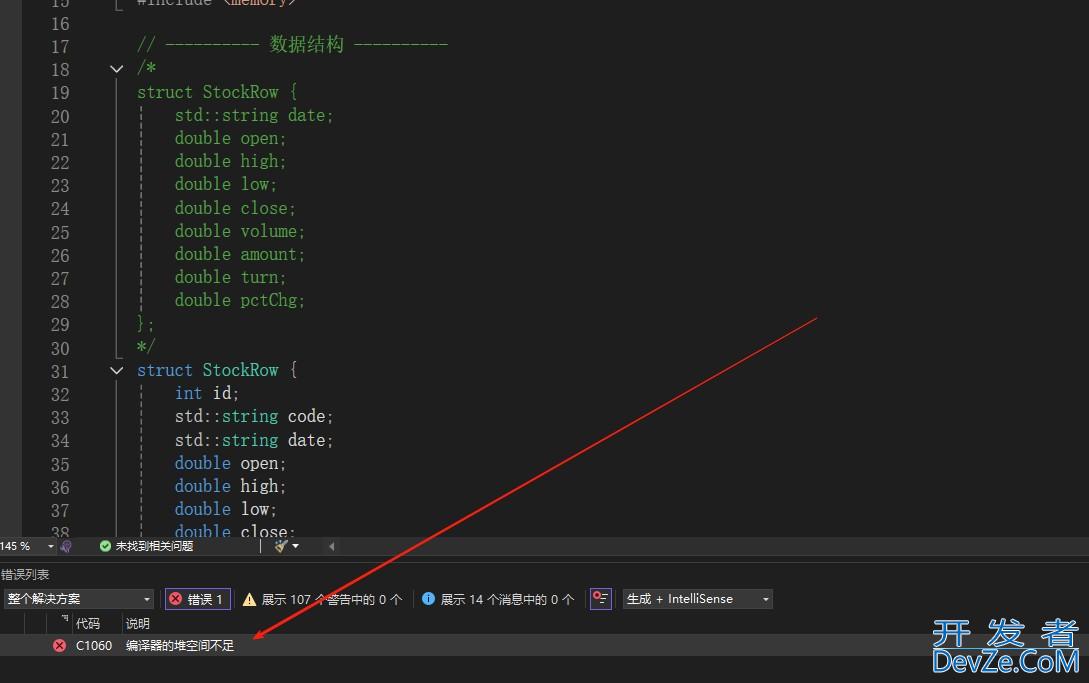NumPy迭代数组的实现
目录
- 迭代数组
- 一、单数组迭代
- 1. 使用 nditer 访问数组的每个元素
- 2. 控制数组元素的迭代顺序
- 3. 修改数组值
- 4. 使用外部循环,跟踪索引或多索引
- 5. 以特定数据类型迭代
- 二、广播数组迭代
迭代数组
NumPy中引入了 nditer 对象来提供一种对于数组元素的访问方式。
一、单数组迭代
1. 使用 nditer 访问数组的每个元素
>>>a =http://www.devze.com np.arange(12).reshape(3, 4) >>>for x in np.nditer(a): print(x, end=' ') 0 1 2 3 4 5 6 7 8 9 10 11 # 以上实例不是使用标准 C 或者 Fortran 顺序,选择的顺序是和数组内存布局一致的, # 这样做是为了提升访问的效率,默认是行序优先(row-major order,或者说是 C-order)。 # 这反映了默认情况下只需访问每个元素,而无需考虑其特定顺序。 # 我们可以通过迭代上述数组的转置来看到这一点, # 并与以 C 顺序访问数组转置的 copy 方式做对比,如下实例: >>>for x in np.nditer(a.T): print(x, end=' ') 0 1 2 3 4 5 6 7 8 9 10 11 >>>for x in np.nditer(a.T.copy(order='C')): print(x, end=' ') 0 4 8 1 5 9 2 6 10 3 7 11
2. 控制数组元素的迭代顺序
使用参数 order 控制元素的访问顺序,参数的可选值有:
- ‘C’:C order,即是行序优先;
- ‘F’:Fortran order,即是列序优先;
- ’K’:参考数组元素在内存中的顺序;
- ‘A’:表示’F’顺序;
>>>a = np.arange(12).reshape(3, 4) >>>for x in np.nditer(a, order='C'): print(x, end=' ') 0 1 2 3 4 5 6 7 8 9 10 11 >>>a = np.arange(12).reshape(3, 4) >>>for x in np.nditer(a, order='F'): print(x, end=' ') 0 4 8 1 5 9 2 6 10 3 7 11 >>>a = np.arange(12).reshape(3, 4) >>>for x in np.nditer(a, order='K'): print(x, end=' ') 0 1 2 3 4 5 6 7 8 9 10 11 >>>a = np.arange(12).reshape(3, 4) >>>for x qcrSUin np.nditer(a, order='A'): print(x, end=' ') 0 1 2 3 4 5 6 7 8 9 10 11
3. 修改数组值
在使用 nditer 对象迭代数组时,默认情况下是只读状态。因此,如果需要修改数组,可以使用参数 op_flags = 'readwrite' or 'writeonly' 来标志为读写或只读模式。
此时,nditer 在迭代时将生成可写的缓冲区数组,可以在此进行修改。为了在修改后,可以将修改的数据回写到原始位置,需要在迭代结束后,抛出迭代结束信号,有两种方式:
- 使用 with 上下文管理器;
- 在迭代结束后,调用迭代器的close方法;
>>>a = np.arange(12).reshape(3, 4)
>>>print(a)
>>>with np.nditer(a, op_flags=['readwrite']) as it:
for x in it:
x += 10
>>>print(a)
[[ 0 1 2 3]
[ 4 5 6 7]
[ 8 9 10 11]]
[[10 11 12 13]
[14 15 16 17]
[18 19 20 21]]
4. 使用外部循环,跟踪索引或多索引
以上操作在迭代过程中,都是逐元素进行的,这虽然简单,但是效率不高。可以使用参数 flags 让 nditer 迭代时提供更大的块。并可以通过强制设定 C 和 F 顺序,得到不同的块大小。
# 默认情况下保持本机的内存顺序,迭代器提供单一的一维数组
# 'external_loop' 给出的值是具有多个值的一维数组,而不是零维数组
>>>a = np.arange(12).reshape(3, 4)
>>>print(a)
>>>for x in np.nditer(a, flags=['external_loop']):
print(x, end=' ')
[[ 0 1 2 3]
[ 4 5 6 7]
[ 8 9 10 11]]
[ 0 1 2 3 4 5 6 7 8 9 10 11],
# 设定 'F' 顺序
>>>a = np.arange(12).reshape(3, 4)
>>>print(a)
>>>for x in np.nditer(a, flags=['external_loop'], order='F'):
print(x, end=' ')
[[ 0 1 2 3]
[ 4 5 6 7]
[ 8 9 10 11]]
[0 4 8], [1 5 9], [ 2 6 10], [ 3 7 11],
# 'c_index' 可以通过 it.index 跟踪 'C‘ 顺序的索引
>>>a = np.arange(12).reshape(3, 4)
>>>print(a)
>>>it = np.nditer(a, flags=['c_index'])
>>>for x in it:
print("{}: ({})".format(x, it.index))
[[ 0 1 2 3]
[ 4 5 6 7]
[ 8 9 10 11]]
0: (0)
1: (1)
2: (2)
3: (3)
4: (4)
5: (5)
6: (6)
7: (7)
8: (8)
9: (9)
10: (10)
11: (11)
# 'f_index' 可以通过 it.index 跟踪 'F‘ 顺序的索引
>>>a = np.arange(12).reshape(3, 4)
>>>print(a)
>>>it = np.nditer(a, flags=['c_index'])
>>>for x in it:
print("{}: ({})".format(x, it.index))
[[ 0 1 2 3]
[ 4 5 6 7]
[ 8 9 10 11]]
0: (0)
1: (3)
2: (6)
3: (9)
4: (1)
5: (4)
6: (7)
7: (10)
8: (2)
9: (5)
10: (8)
11: (11)
# 'multi_index' 可以通过 it.multi_index 跟踪数组索引http://www.devze.com
>>>a = np.arange(12).reshape(3, 4)
>>>print(a)
>>>it = np.nditer(a, flags=['multi_index'])
>>>for x in it:
print("{}: {}".format(x, it.multi_index))
[[ 0 1 2 3]
[ 4 5 6 7]
[ 8 9 10 11]]
0: (0, 0)
1: (0, 1)
2: (0, 2)
3: (0, 3)
4: (1, 0)
5: (1, 1)
6: (1, 2)
7: (1, 3)
8: (2, 0)
9: (2, 1)
10: (2, 2)
11: (2, 3)
external_loop 与 multi_index、c_index、c_index不可同时使用,否则将引发错误 ValueError: Iterator flag EXTERNAL_LOOP cannot be used if an index or multi-index is being tracked
5. 以特定数据类型迭代
当需要以其它的数据类型来迭代数组时,有两种方法:
- 临时副本:迭代时,会使用新的数据类型创建数组的副本,然后在副本中完成迭代。但是,这种方法会消耗大量的内存空间。
- 缓冲模式: 使用缓冲来支持灵活输入,内存开销最小。
# 临时副本
>>>a = np.arange(12).reshape(3, 4)
>>>print(a.dtype)
>>>it = np.nditer(a, op_flags=['readonly', 'copy'],op_dtypes=[np.float64])
>>>for x in it:
print("{}".format(x), end=', ')
int32
0.0, 1.0, 2.0, 3.0, 4.0, 5.0, 6.0, 7.0, 8.0, 9.0, 10.0, 11.0,
# 缓冲模式
>>>a = np.arange(12).reshape(3, 4)
>>>print(a.dtype)
>>>it = np.nditer(a, flags=['buffered'],op_dtypes=[np.float64])
>>>for x in it:
print("{}".format(x), ephpnd=', ')
int32
0.0, 1.0, 2.0, 3.0, 4.0, 5.0, 6.0, 7.0, 8.0, 9.0, 10.0, 11.0,
注意
默认情况下,转化会执行“安全”机制,如果不符合 NumPwww.devze.comy 的转换规则,会引发异常:TypeError: Iterator operand 0 dtype could not be cast from dtype('float64') to dtype('float32') according to the rule 'safe'二、广播数组迭代
如果不同形状的数组是可广播的,那么 dtype 可以迭代多个数组。
>>> a = np.arange(3)
>>> b = np.arange(6).reshape(2,3)
>>> for x, y in np.nditer([a,b]):
print("%d:%d" % (x,y), end=' ')
0:0 1:1 2:2 0:3 1:4 2:5
到此这篇关于NumPy迭代数组的实现的文章就介绍到这了,更多相关NumPy迭代数组内容请搜索我们以前的文章或继续浏览下面的相关文章希望大开发者_Js入门家以后多多支持我们!






 加载中,请稍侯......
加载中,请稍侯......
精彩评论